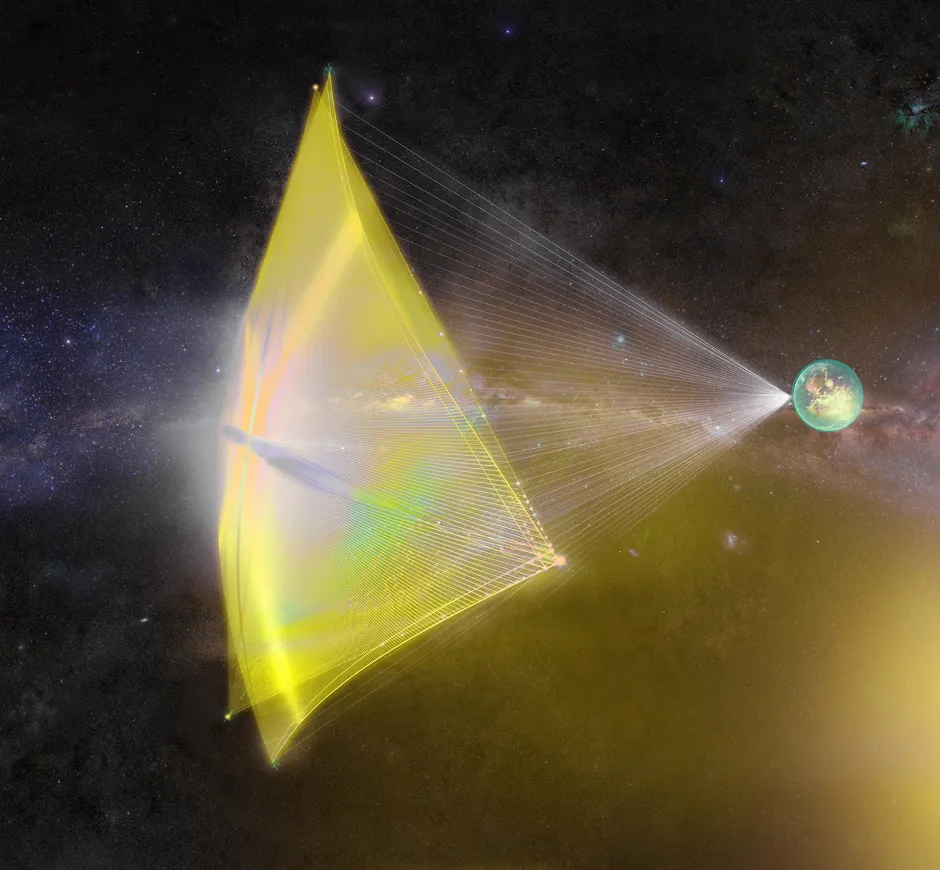There was a fascinating episode of the Guardian science podcast about a project to send probes to the nearest star using lasers to accelerate them to incredible speed. Conventional rockets could take thousands of years to get there. The Breakthrough Starshot Initiative wants to build tiny probes that weigh a few grams with a 'sail'. Massive lasers down on Earth would push on this to get it up to a fifth of light speed. So it would only take decades to get to Proxima Centauri, which may have a habitable planet.

There are lots of challenges that include:
- Making a probe that weighs about a gram, but has sensors that can send back useful data
- Building a sail that also weighs a gram and expands to 16 square metres. It has to be totally reflective or the laser will destroy it
- Building a 50GW laser array on the ground
- Sending data back with a transmitter that may only be 1W
- It wasn't mentioned, but the probe probably won't be able to slow down, so it will only have a short period to make observations in the remote system
It seems like science fiction, but the physics should work. It opens the possibility of getting data from a remote star system within a human lifetime. It might take 20 years to get there and another 4 for signals to get back.
To infinity, and beyond!

Mine cryptocurrency in the cloud at Eobot, including Steem. You can earn as you chat using WowApp. If you use these links I get a small reward. You can recruit others to do the same.